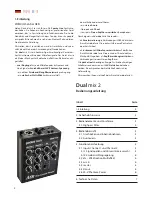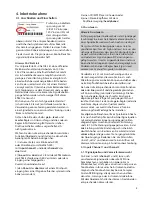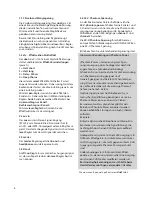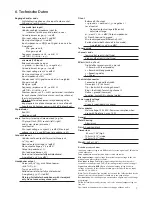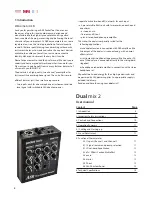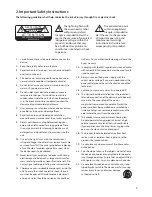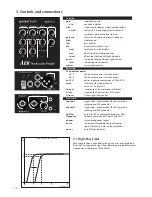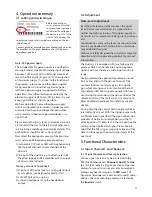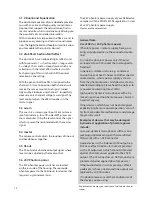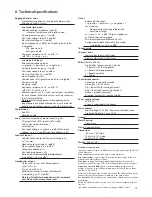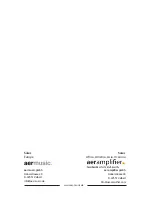
11
Note: 24V-power supply
The included 24VDC power supply is a certified wi-
de-range model, capable of handling input voltages
between 100V and 240V. A substantial amount of
research, effort and testing went into the selection
of this power supply. It is critical to the function of
the preamp – please use no other power supply!
Also please bear in mind that any device powe-
red from a power supply (as opposed to battery
operation), may suffer interference carried by the
electricity supply itself. To avoid this, always try and
keep signal cables as short as possible.
We have opted for a “non-earthed power supply“
(class 2 with protective insulation) in order to avoid
unwanted earth or ground loops that occur when
using several earthed mains powered devices in a
signal chain.
Please ensure that gain-, level- and volume-controls
are turned all the way to the left
and all other cont-
rols are in their middle position (centre detent). The
pushbuttons should be off, i.e. not pushed.
Now select the appropriate preamp function (line/
mic) and make all required cable connections:
1) Instruments (1/4“ jack or XLR) or Microphones (only
XLR) to input channel 1 and/or channel 2 of the
dual mix
2) line-out of the dual mix e.g. to effects return of
the effect loop of an AER amplifier or to the input
of a downstream device
You may also want to connect:
1) the DI-out of the dual mix to a mixing-desk input
or a stagebox (use balanced cables for this)
2) a CD/MP3 player to aux-in or
3) a stereo headphone set to the headphones
output.
4. Operation summary
4.1 Cabling and switching on
Before connecting to
mains, please ensure that
your local mains voltage is
suitable for the voltage of
the device (e.g. 120V in the
USA, 230V in Europe). The
relevant specs and safety symbols are printed on the rear
side of the unit.
Connect all cables according to your application and switch
the amplifier on. The green
power
control LED indicates
operational readiness.
4.2 Adjustment
Note: Level adjustment
By setting the level correctly we mean the signal
level in one or several devices in a signal chain is
neither too high nor too low. This applies equally to
all circuits in a complete circuit design (EQs, preamps
etc.)
Consequently, care must be taken that no part of the
circuit is overloaded or that distortion is unintentio-
nally added to the signal.
We have carefully designed the circuit to achieve this
objective whilst also providing controls for „manual“
intervention.
The dual mix 2 is equipped with two high-quality
preamps which can handle line and microphone
signals and have therefore a wide input sensitivity
range.
Having selected the appropriate preamp function
(mic or line) and with the gain controls set fully
counter clockwise (minimum gain), turn up the
gain whilst playing your instrument until the red
clip indicator LED lights up occasionally with heavy
strumming. Now turn down the gain control (or the
volume control on the source) by a tiny amount to
allow additional headroom for undistorted repro-
duction.
During play, the clip control LED should only flicker
intermittently at most. With line (signal sources with
a sufficient input signal level) the gain controls will
probably sit between minimum gain and the 10
o’clock position. It’s likely that in the mic position the
setting will be significantly higher. Please keep in
mind that the filter stages are partly active and thus
have an influence on the overall adjustment of the
dual mix 2.
5. Functional Characteristics
5.1 Inputs Channel 1 and Channel 2
5.1.1 Signal Sources and Preamp Selection
Various signal sources may be connected to the
XLR/line combo sockets (channel 1 und 2). To Line
(6.3 mm jack socket): all types of active and passive
pickups for acoustic instruments, electromagnetic
pickups, keyboards, samplers. To XLR socket: all
dynamic and condenser (vocal or instrument) micro-
phones. The corresponding preamp is selected by
the line/mic-switch.


